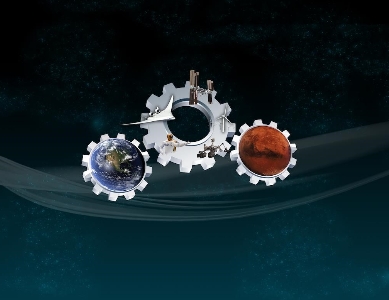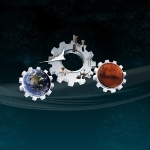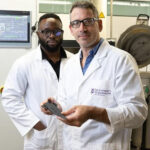NASA is partnering with eight U.S. companies to advance small spacecraft and launch vehicle technologies that are on the verge of maturation and are likely to benefit both NASA and the commercial space market. The partnership’s goal is to accelerate the development of commercial capabilities to enable frequent launches of small spacecraft to low-Earth orbit.
These partnerships are the result of a solicitation released in August 2016 by NASA’s Space Technology Mission Directorate (STMD), titled Utilizing Public-Private Partnerships to Advance Tipping Point Technologies. They mark the second round of public-private opportunities that enable industry to develop promising commercial space technologies that also may benefit future NASA missions.
“The first awards showed us how much the commercial space sector is ready to collaborate with us on developing capabilities that align with their business plans and meet NASA’s strategic goals,” says Steve Jurczyk, associate administrator for STMD. “By contributing their own funds to their projects, these U.S. companies are joining in innovative co-investments to enable NASA’s next generation of science and human exploration missions.”
A technology is considered at a ‘tipping point’ if an investment in a demonstration of its capabilities will result in a significant advancement of the technology’s maturation, a higher likelihood of infusion into a commercial space application, and a significant improvement in the partner’s ability to successfully bring the technology to market.
Small Launch Vehicle Technology enables the use of small spacecraft for technology development, science missions and to support deep space human exploration. Among the 8 companies, there are:
HRL Laboratories, LLC, Malibu, Calif.
Additively Manufactured Ceramic Rocket Engine Components
HRL Laboratories will develop additively manufactured high-temperature materials applicable to rocket engine components. HRL Laboratories, working with their sub-contractor Vector Space Systems, will mature the technology resulting in a hot-fire test of a high performance liquid oxygen/propylene rocket engine. This technology can be applied to small and large engines for launch vehicles.
Orbital Sciences Corp., Dulles, Va.
Carbon Nanotube Infused Launch Vehicle Structures
Orbital Sciences Corp. will incorporate advanced materials for dampening into flight structures to reduce dynamic loads during flight. They will build sub-scale and full-scale flight structures and complete end-to-end ground and flight testing. If successful, this technology has the potential to increase the payload capability and reduce costs for launch vehicles.
The fixed-priced contracts include milestone payments tied to technical progress and require a minimum 25 percent industry contribution, though all awards are contingent on the availability of appropriated funding. The contracts are worth a combined total of approximately $17 million, and each have an approximate two-year performance period culminating in a small spacecraft orbital demonstration mission or the maturation of small launch vehicle technologies.
These awards are funded by STMD, which is responsible for developing the cross-cutting, pioneering, new technologies and capabilities needed by the agency to achieve its current and future missions.













